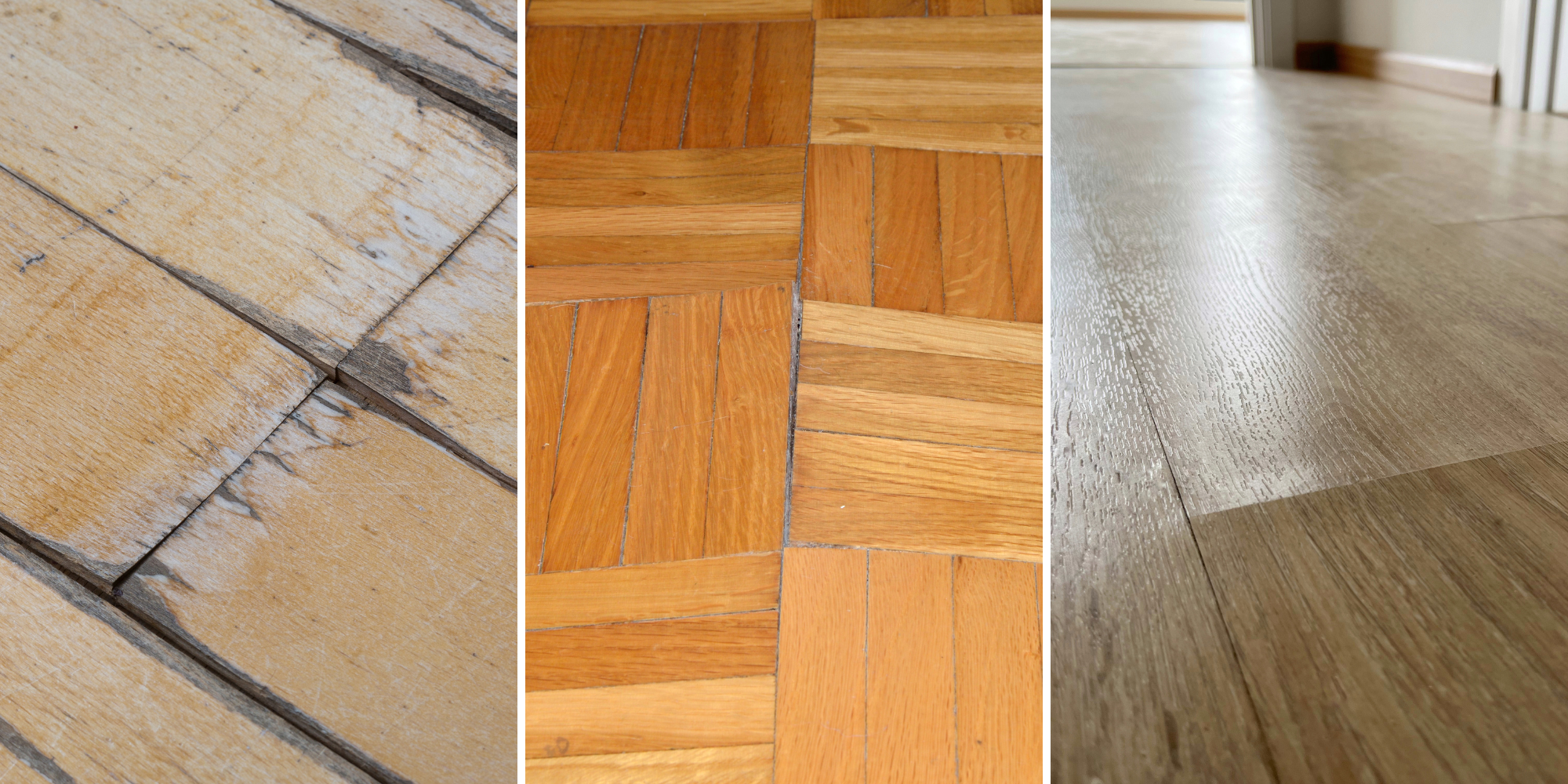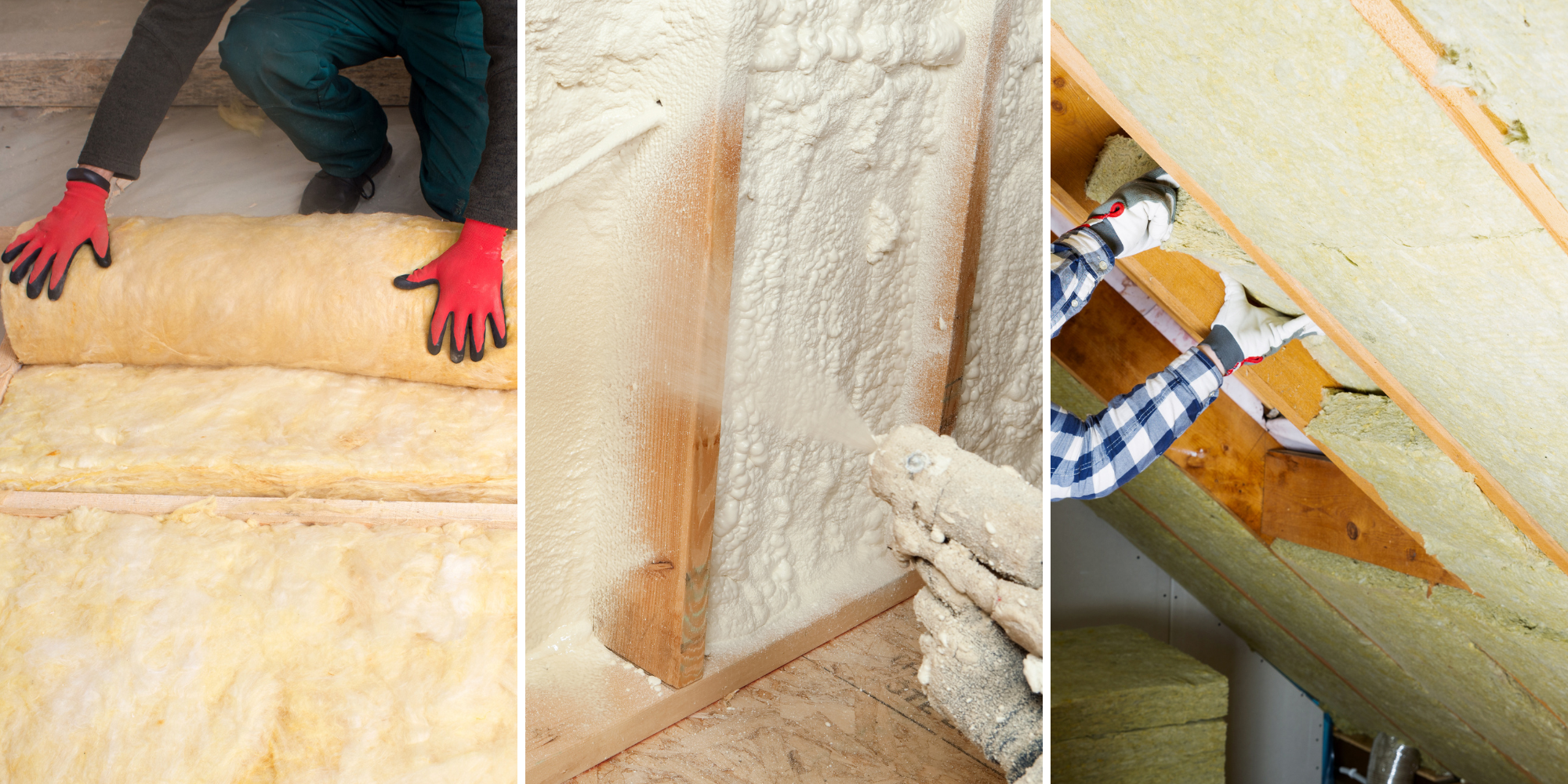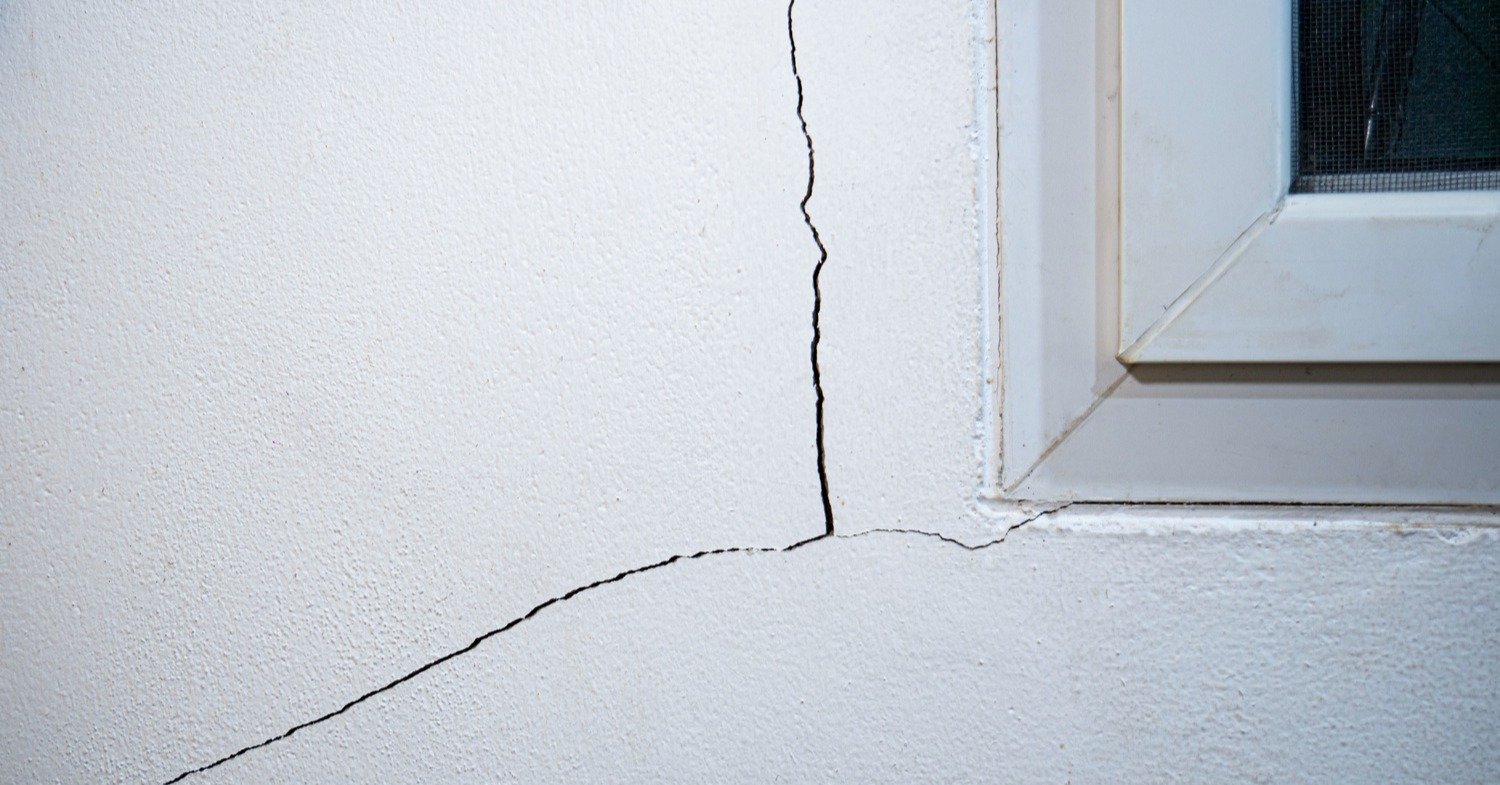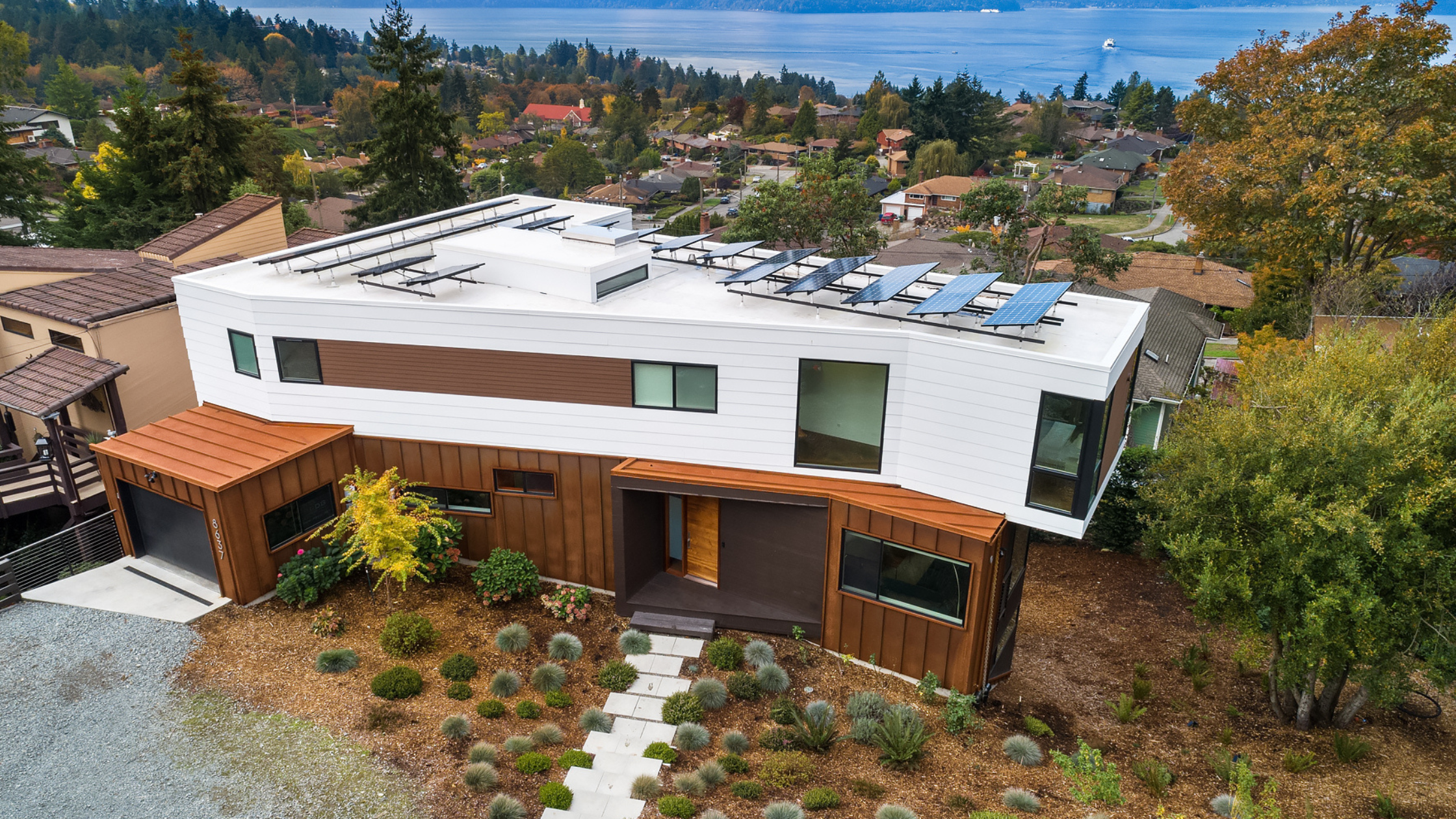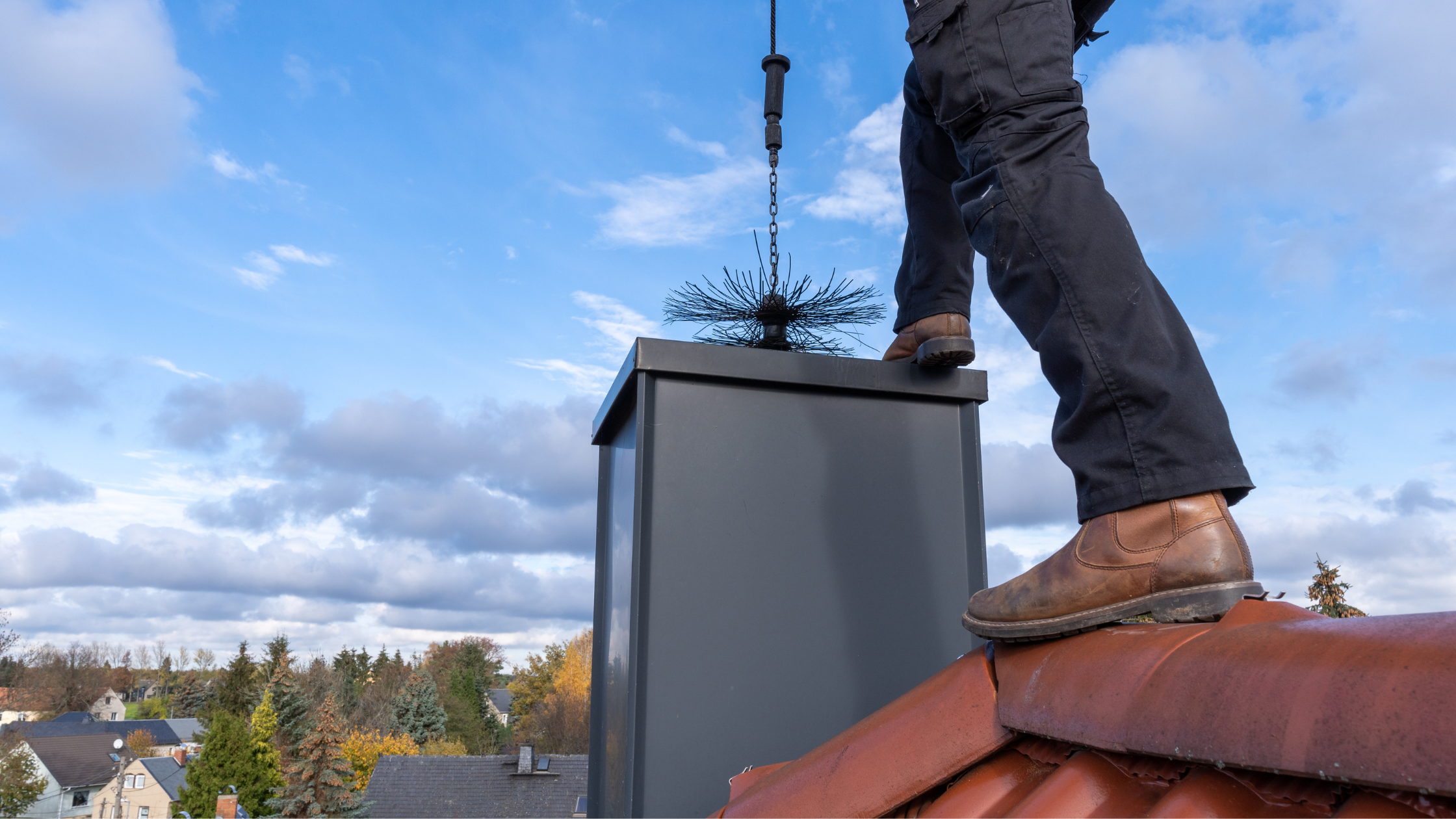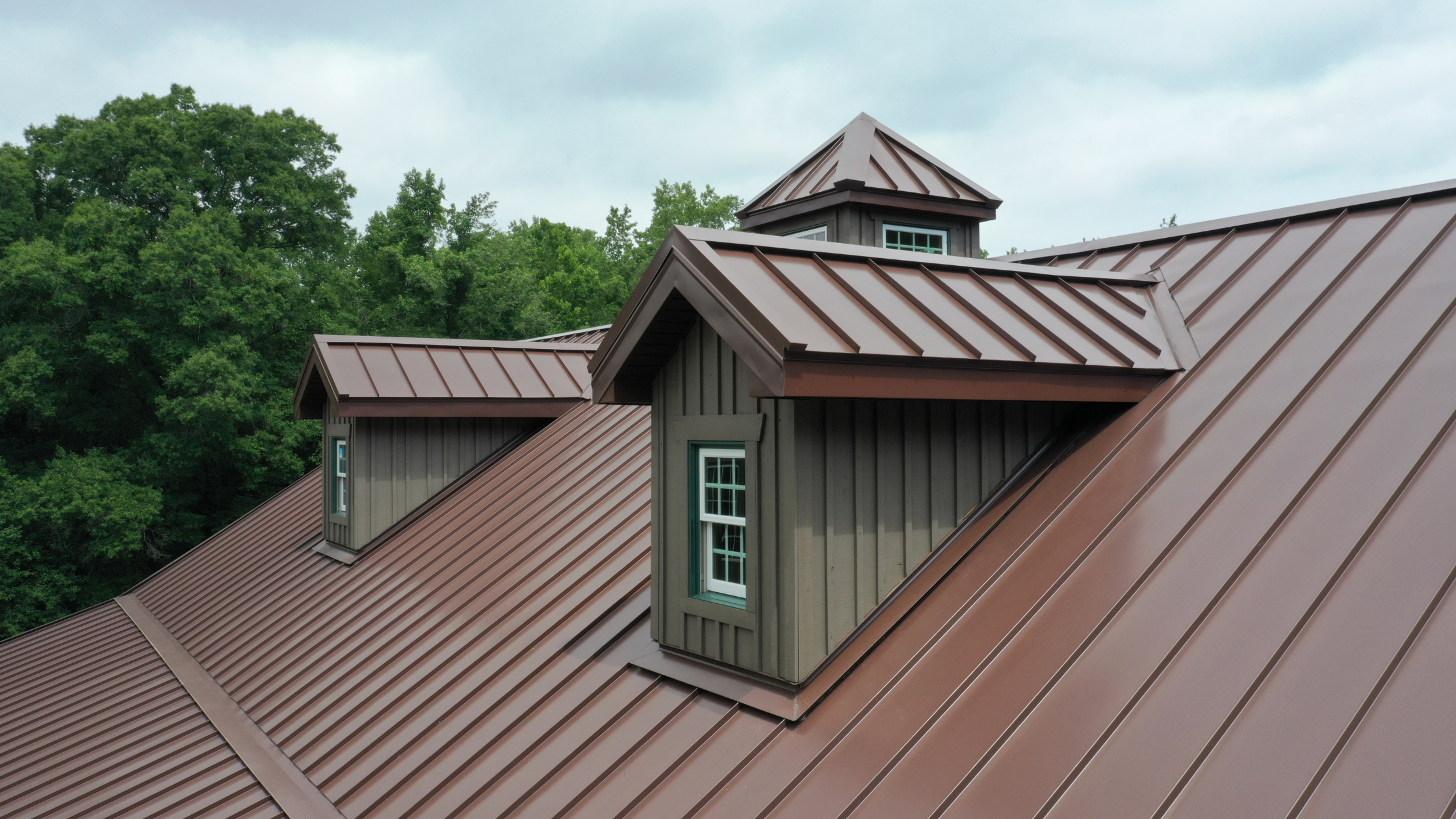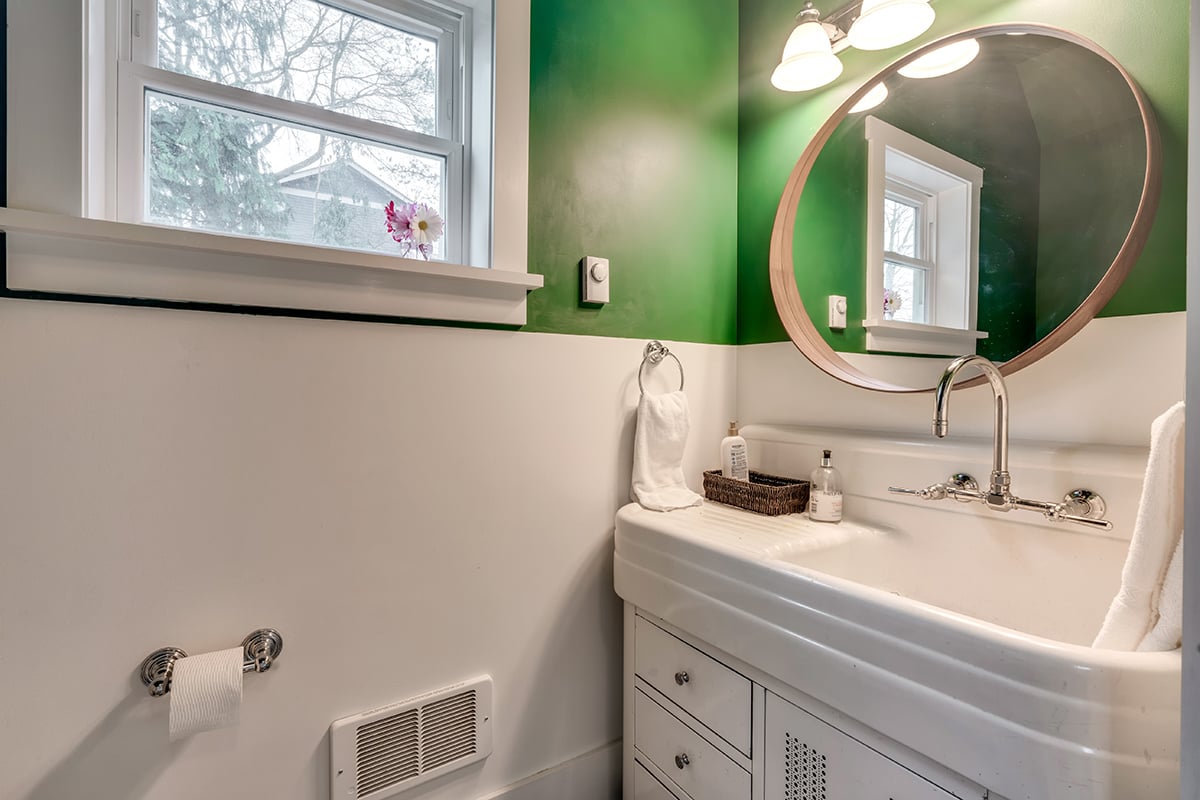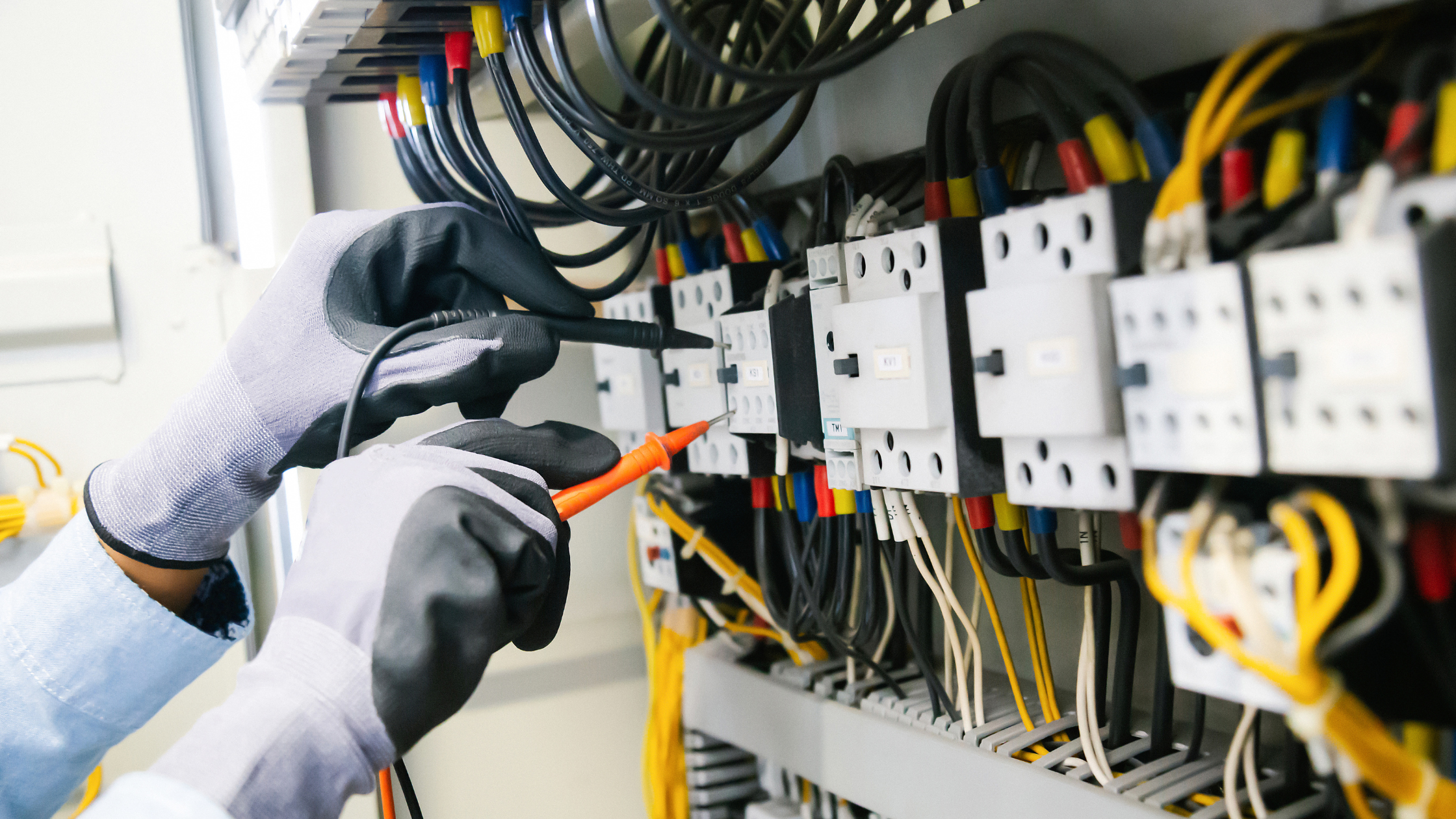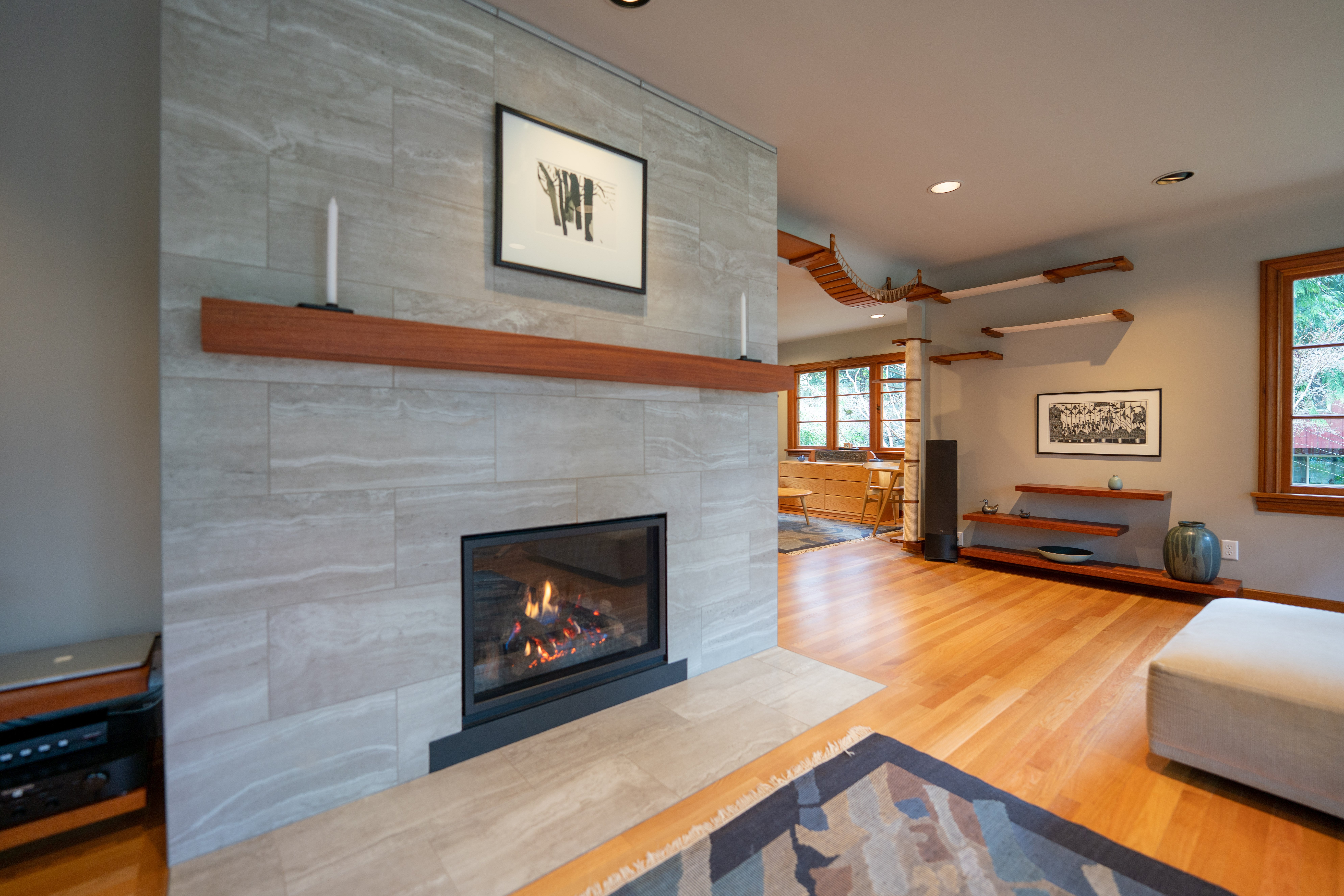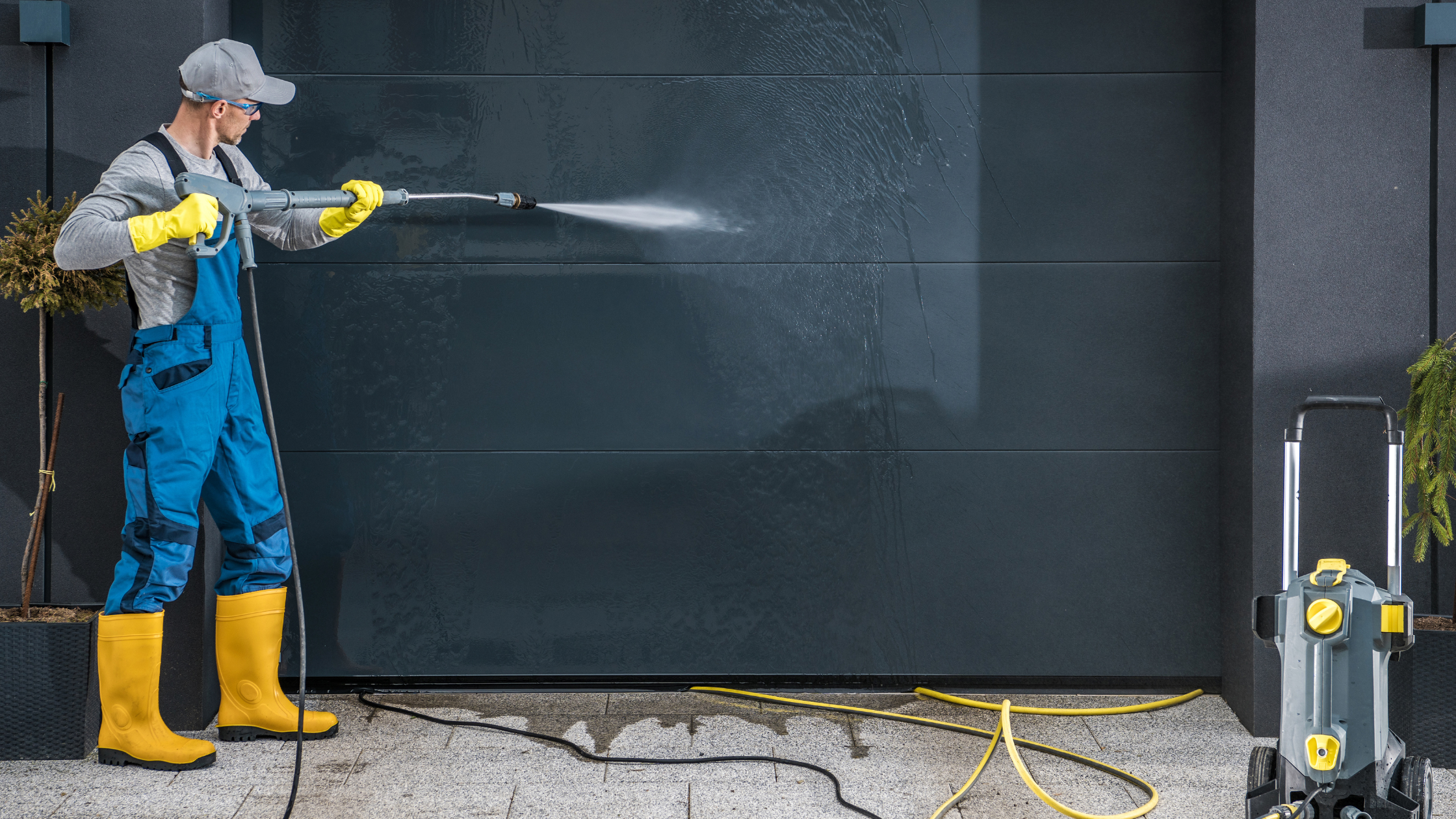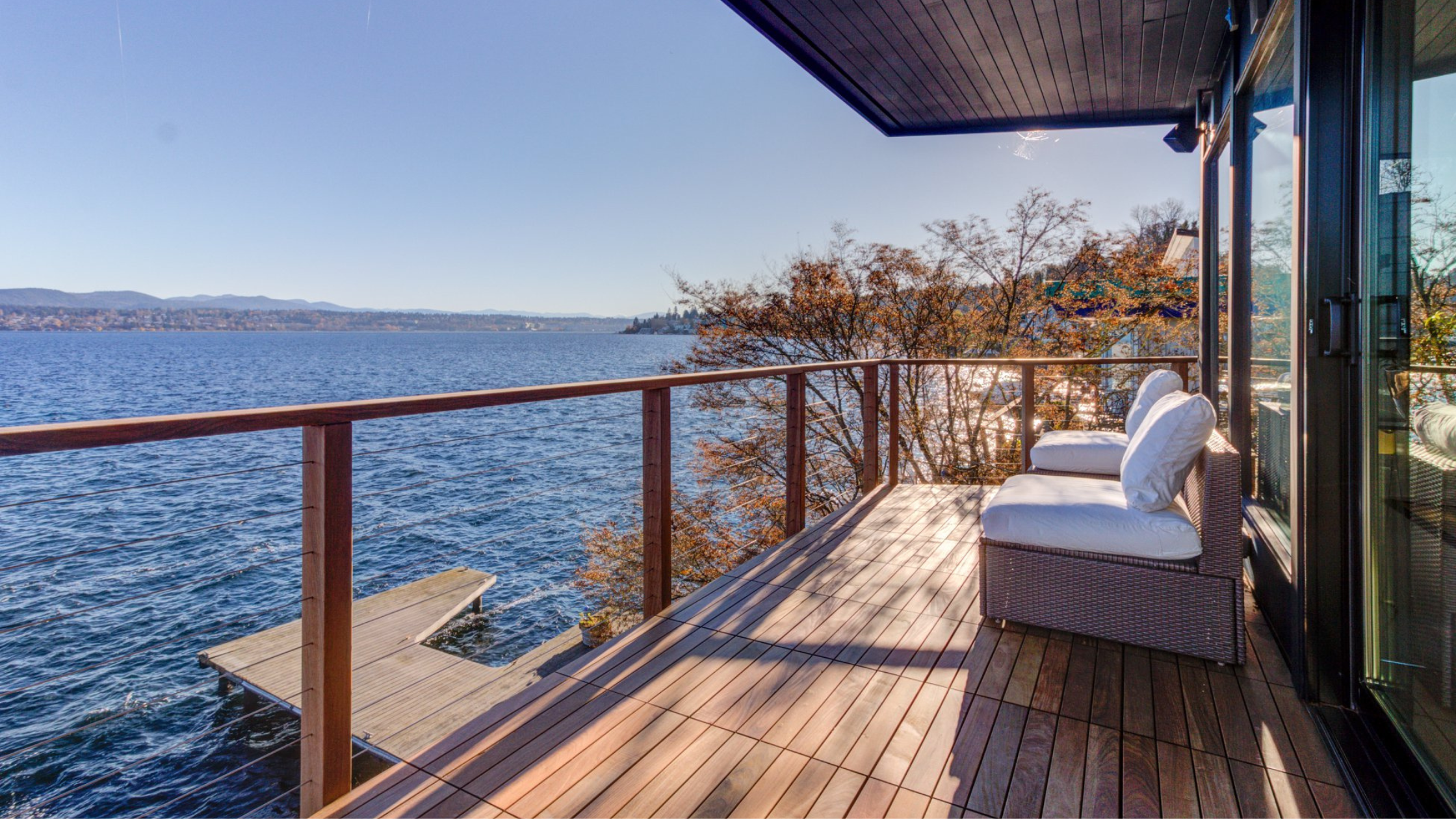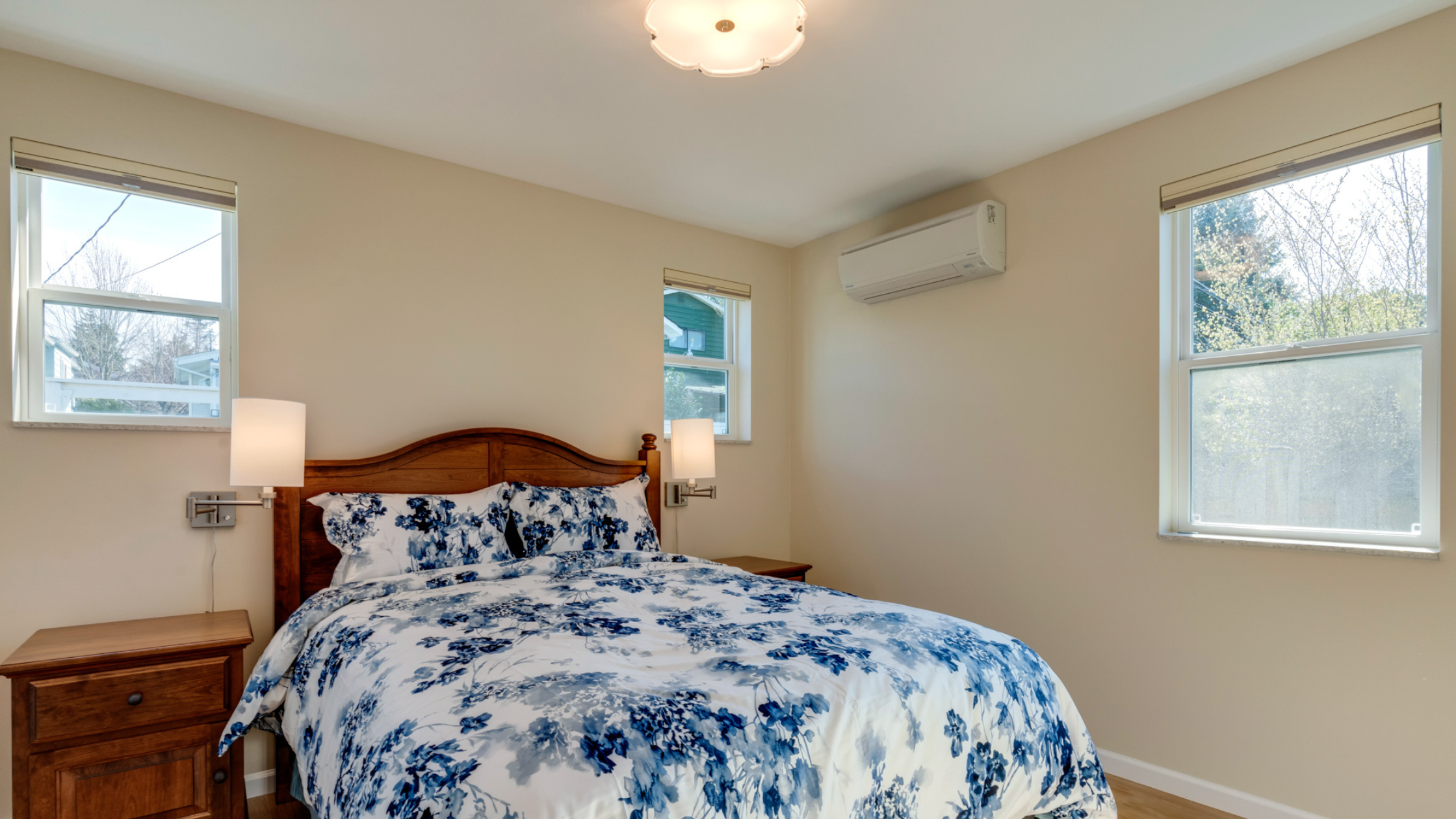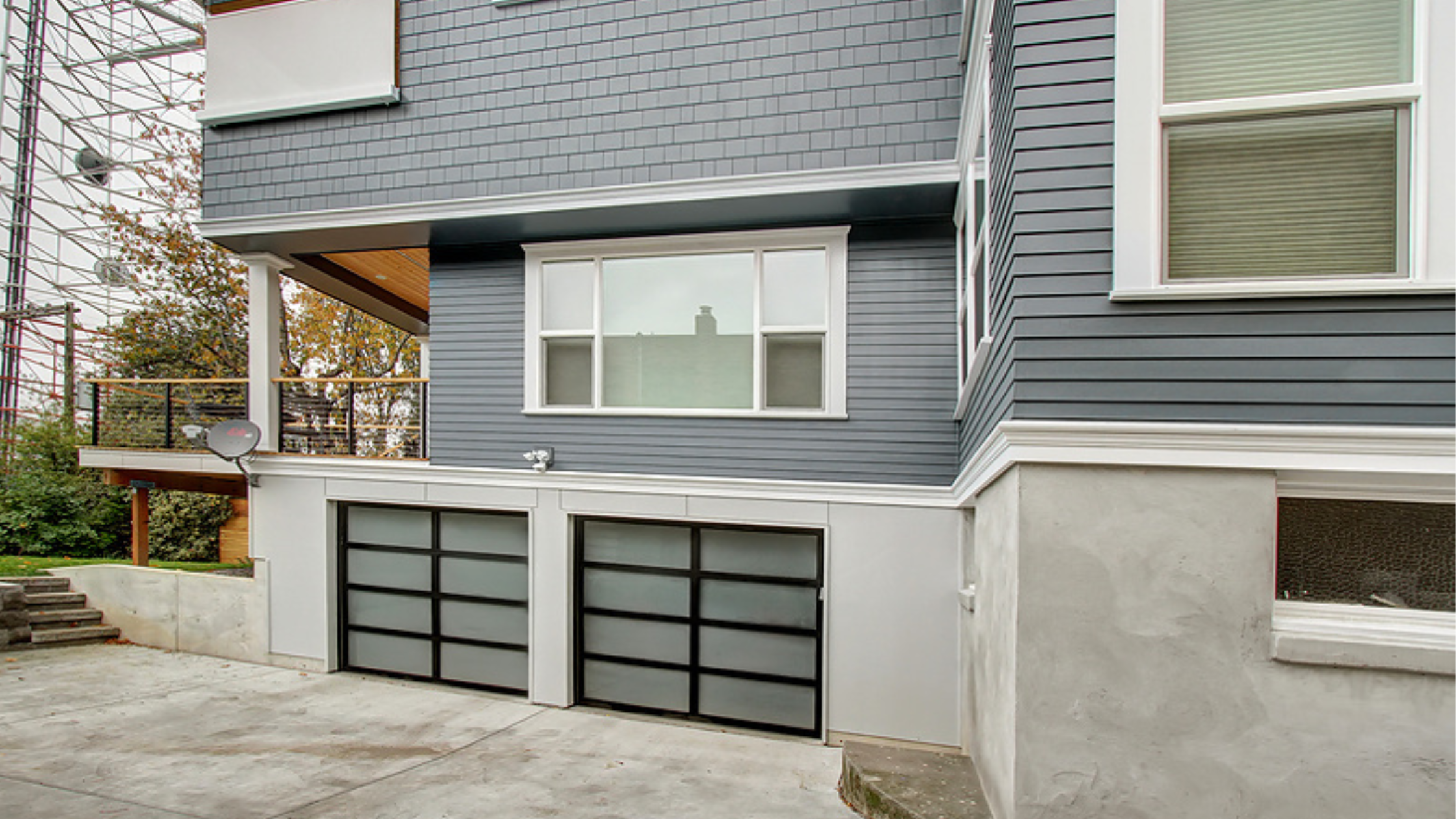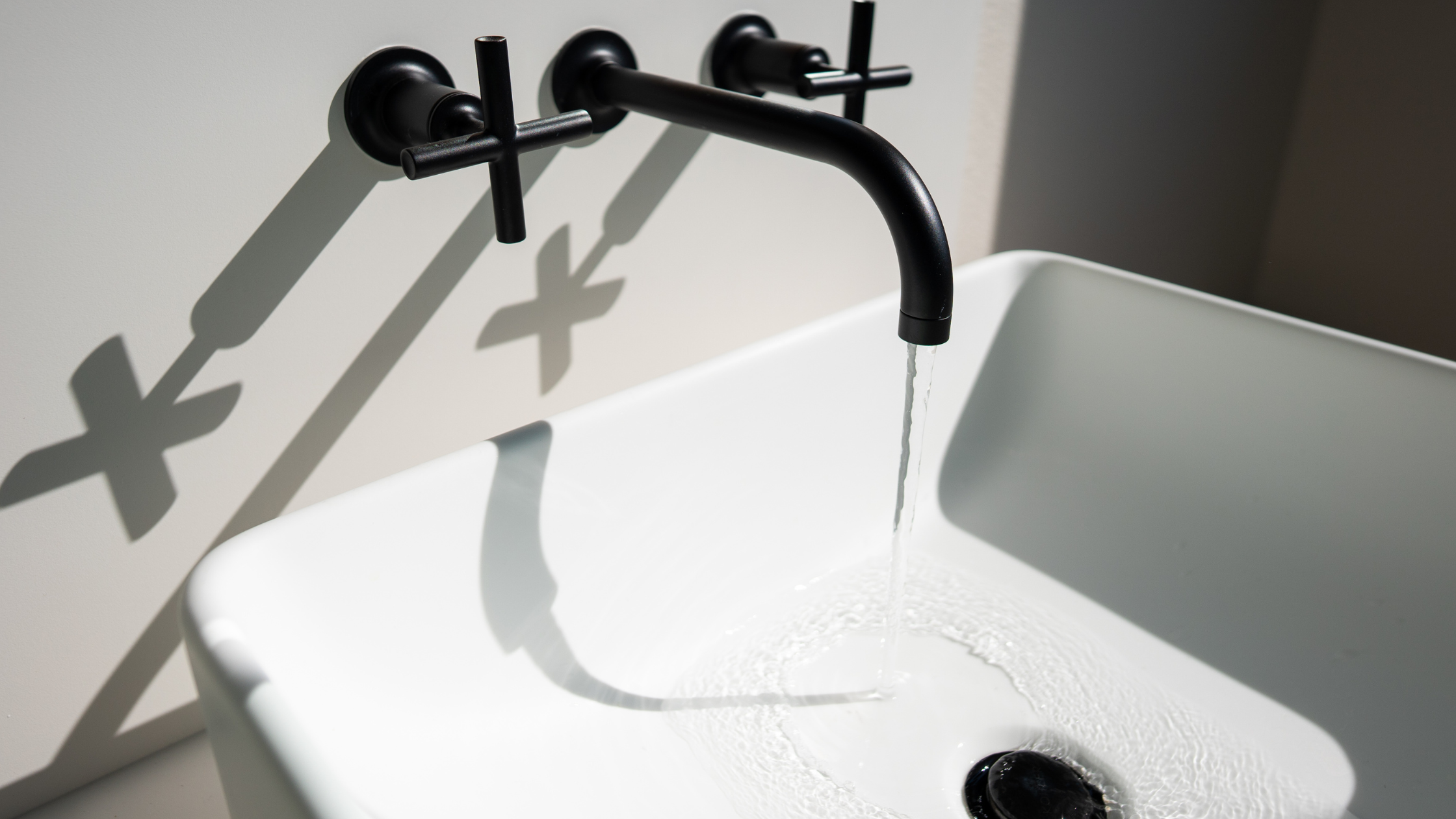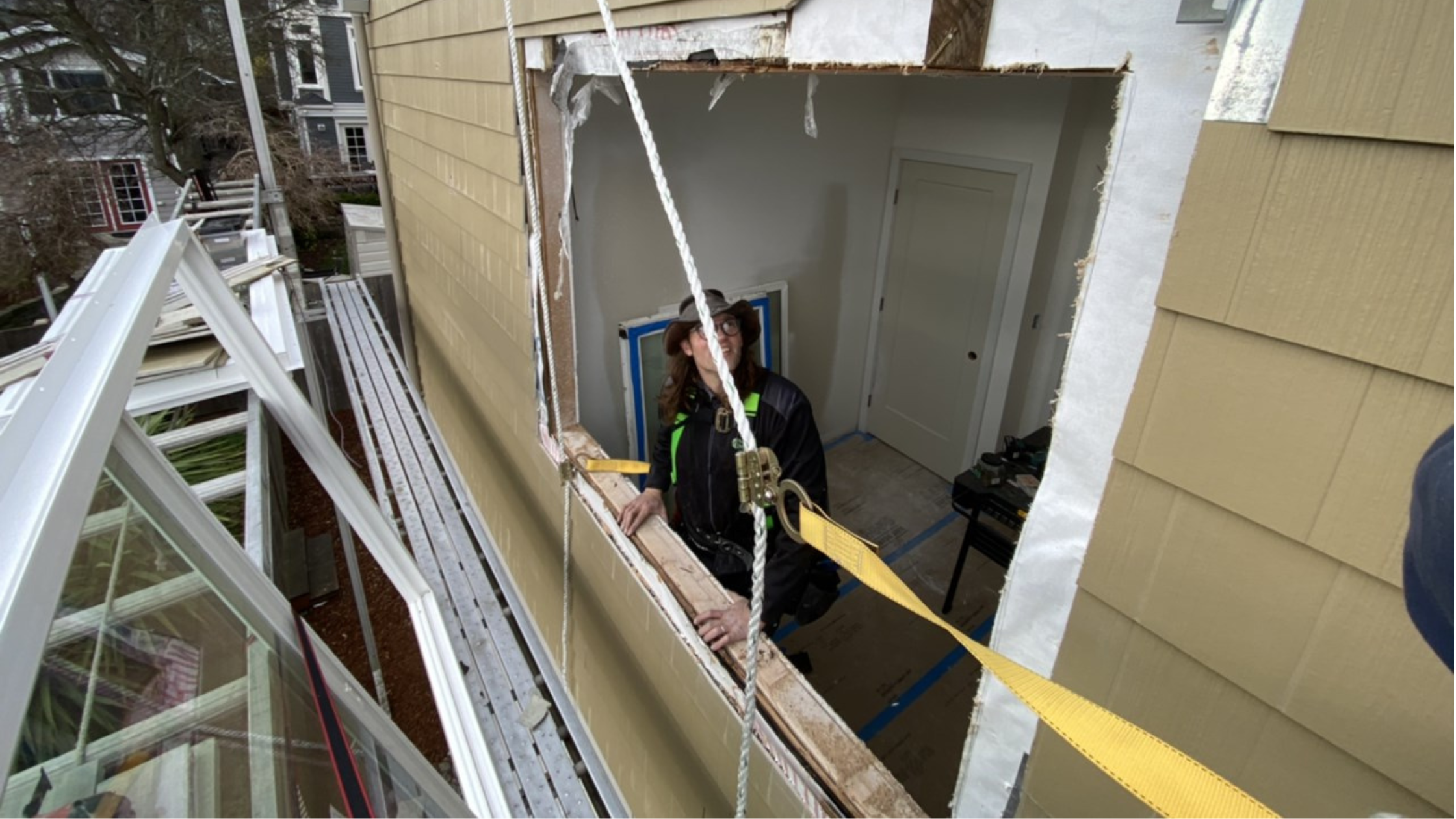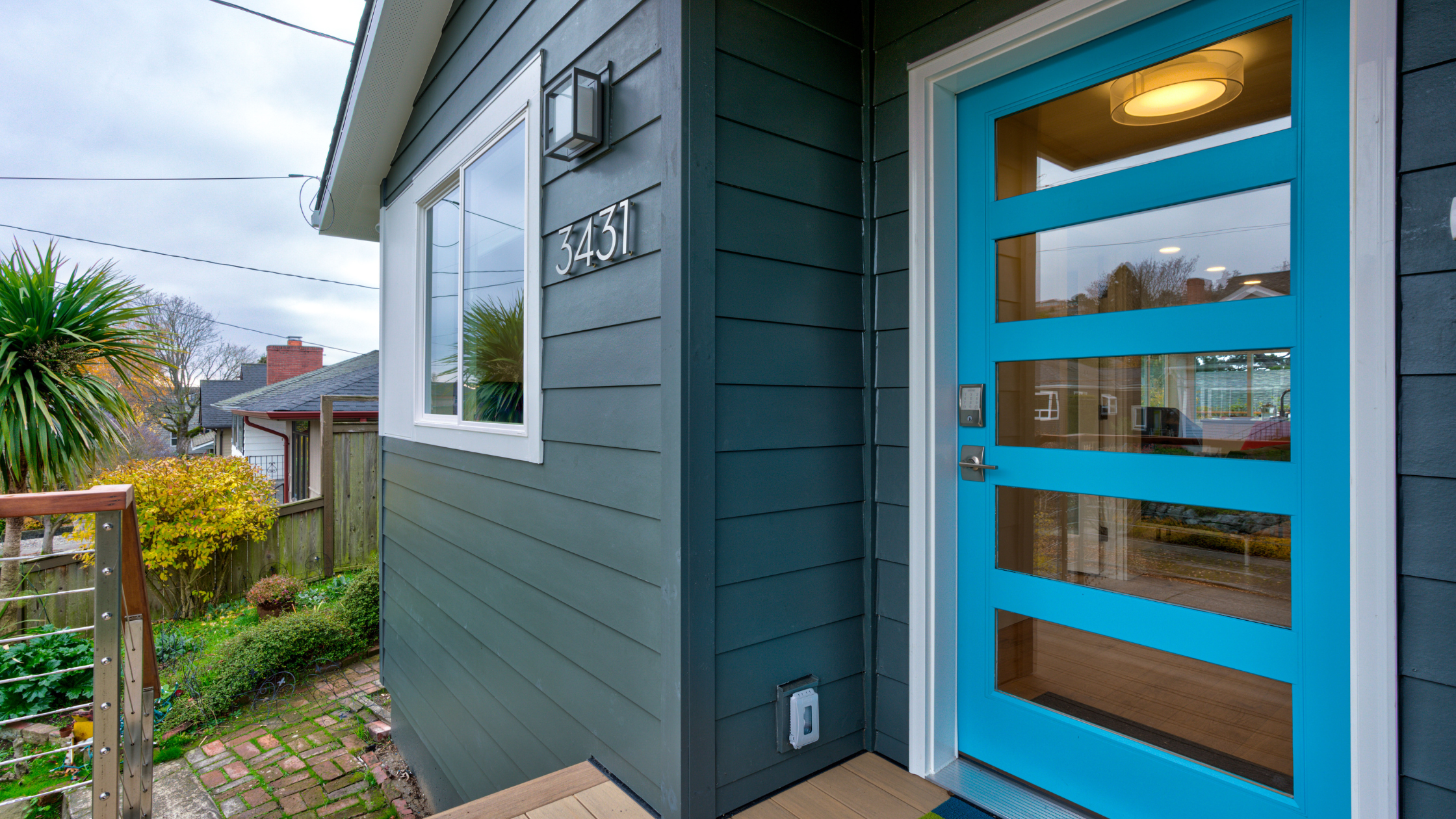What’s Driving Up Your Utility Bills—and How to Slash Energy Costs
For Seattle homeowners planning a remodel, the true value isn’t just in new finishes or modern features—it’s in uncovering what your home (and your lifestyle) really needs. At Better Builders, we take a holistic approach from the very beginning, asking thoughtful, upfront questions to understand how you live, what matters most, and where your home may be falling short. This allows us to design remodels that not only include strategic energy-efficient upgrades, but also enhance your daily quality of life.
Whether it’s improving comfort, functionality, sustainability, or long-term value, we look at the full picture to ensure your remodel works hard for you in every way. Here are the key areas we assess first when evaluating the biggest energy drains in your home.
Table of Contents
Top Energy Hogs & How to Choose Energy-Efficient Alternatives
1. Poor Insulation and Crawl Space Air Sealing
If your home feels drafty in the winter or struggles to stay cool in the summer, the culprit may be right above—or below—you. According to the U.S. Department of Energy, properly insulating attics, floors, crawl spaces, and rim joists, along with sealing air leaks, can reduce heating and cooling costs by up to 20%.
These areas often go overlooked during homeownership, but they play a massive role in your home’s overall energy performance.
Insufficient or aging insulation materials, particularly in older homes, allow heated or cooled air to escape while allowing outside air to enter. And when your HVAC system has to compensate for this constant exchange, it leads to higher energy costs, more frequent maintenance, and inconsistent indoor heating and cooling.
Crawl space air sealing is equally important. Gaps, cracks, and unsealed penetrations allow outside air—and moisture—to creep into your home’s envelope. This not only reduces energy efficiency but can also increase the risk of mold, mildew, and pest problems.
Upgrading attic insulation and sealing your crawl space is one of the most cost-effective energy-efficient upgrades you can make. It improves indoor air quality, increases thermal comfort, and reduces wear and tear on your HVAC system—all while lowering monthly utility bills.
2. Aging HVAC, Heat Pumps, and Boilers
Your heating and cooling systems are among the biggest contributors to your home’s energy consumption and your utility bills. Older HVAC units, boilers, and furnaces often operate significantly below today’s efficiency standards, which means they consume more energy to perform the same amount of work.
Upgrading these systems is one of the most impactful energy-efficient home improvements you can make, especially when undertaking a remodeling project.
Improved Efficiency Ratings
Today’s high-efficiency systems are engineered to perform better using less energy:
- Older furnaces may operate at 60–80% efficiency
- Modern boilers and furnaces can achieve up to 98% AFUE (Annual Fuel Utilization Efficiency—the standardized rating that measures how efficiently a heating system converts fuel into usable heat, expressed as a percentage).
- Heat pumps—whether air-source or geothermal—deliver 300–500% efficiency by transferring heat instead of generating it
That means less fuel burned, lower emissions, and smaller energy bills.
Smarter Technology
New HVAC systems go beyond basic temperature control. They often include:
- Variable-speed motors that adjust output based on your home’s needs
- Zoning systems to avoid heating/cooling unused areas
- Smart thermostats for programmable, precise energy use
These features automatically reduce waste and enhance comfort, eliminating the need for constant homeowner adjustment.
Reduced Energy Waste
Older systems are notorious for energy loss through leaky ductwork, frequent cycling on/off, and outdated technology. When paired with proper insulation and air sealing, newer systems help eliminate that inefficiency and keep your home consistently comfortable year-round.
Tax Credits and Rebates
Many of these upgrades qualify for the Energy Efficient Home Improvement Credit (IRC Section 25C), which offers:
- Up to $2,000 per year for eligible systems like heat pumps, hot water boilers, and biomass stoves
- Additional local rebates through Seattle City Light
While these systems may require an upfront investment, they deliver long-term savings through lower utility bills, improved indoor comfort and air quality, and increased home value driven by higher energy efficiency ratings.
3. Old Windows, Exterior Doors & Skylights
Older windows, drafty exterior doors, and outdated skylights are some of the biggest culprits when it comes to energy loss—especially in Seattle’s variable climate. These components form key parts of your home’s thermal envelope, and when they underperform, your HVAC system has to work harder to maintain a consistent indoor temperature.
Why They Waste Energy
-
Heat Transfer: Single-pane or poorly insulated windows allow heat to escape during the winter and enter during the summer.
-
Air Leakage: Gaps, cracks, or aging seals around doors and skylights allow conditioned or heated air (expensive air) to escape and outside air to enter, leading to drafts and temperature fluctuations.
-
Solar Gain or Loss: Without proper coatings or glazing, windows and skylights can let in excessive heat in the summer or allow warmth to escape in colder months.
As a result, these outdated systems force your HVAC to run longer and more often—driving up both your energy usage and your utility bills.
Energy-Efficient Upgrade Benefits
-
Modern ENERGY STAR® windows and skylights feature double or triple glazing, low-E coatings, and insulated frames to significantly reduce heat transfer.
-
Upgraded exterior doors offer improved insulation, tighter seals, and weather stripping that keeps air where it belongs.
-
These improvements can reduce energy loss by up to 30% depending on the age and condition of your existing windows and doors.
Tax Credits Available
Thanks to the Energy Efficient Home Improvement Credit, homeowners can claim:
-
Exterior doors: Eligible for 30% of costs, capped at $250 per door, up to $500 annually
-
Windows and skylights: Eligible for 30% of costs, capped at $600 total per year
-
Overall annual credit limit: Combined envelope improvements—including windows, doors, insulation, and electrical—are capped at $1,200 per tax year, with an additional $2,000 limit available for heat pumps, biomass stoves, or boilers (for a maximum possible credit of $3,200).
4. Inefficient Water Heating
Water heating is the second-largest energy expense in most homes, accounting for roughly 15–20% of total utility costs according to the U.S. Department of Energy. In households with larger families, daily laundry, long showers, and many dishwashing cycles can further increase that number.
Older water heaters—especially traditional tank models—run continuously, maintaining a temperature of 40 to 80 gallons of water whether you’re home or not. This leads to significant standby energy loss, meaning you’re paying to heat water you’re not even using. The problem is compounded in older units that have poor insulation, aging components, or inefficient heating elements.
Why It’s an Energy Hog
-
Constant cycling: Tank systems heat water all day long, even when you're away.
-
Inefficient fuel use: Older natural gas or electric resistance models lose a lot of heat during storage and distribution.
-
Poor insulation: Heat loss through the tank walls leads to additional energy use.
-
Hard to scale: Many systems aren't sized correctly for modern household needs.
High-Efficiency Upgrade Options
Upgrading to a heat pump water heater is one of the most impactful energy-efficient upgrades available. These systems work by transferring heat rather than generating it—making them 3–5 times more efficient than traditional electric or gas models.
Other modern options include:
-
Solar water heaters (great for households planning other renewable energy upgrades).
-
Efficient propane or natural gas tankless models that only heat water when needed.
These systems not only use far less energy but also improve hot water recovery times and reduce monthly bills.
Tax Credits & Rebates:
Qualifying efficient water heaters—including heat pump models, solar systems, and certain high-efficiency gas units—may be eligible for up to $2,000 per year through the Energy Efficient Home Improvement Credit (25C).
FundHub WA confirms this applies to eligible energy property installed in a homeowner’s primary residence, and Seattle City Light offers additional rebates that may be combined with federal incentives.
Bonus Tip for Seattle Homes: Heat pump water heaters are especially efficient in mild climates like the Pacific Northwest and pair well with other clean energy upgrades like solar or battery storage.
5. Traditional Energy Systems
If you're looking to future-proof your home and significantly reduce long-term energy costs, clean energy systems can be a smart investment. These systems not only reduce your reliance on the grid but also help power your home using renewable energy.
Why Traditional Energy Is Inefficient
Most Seattle homes still rely on grid-supplied electricity, which loses a significant amount of energy through the process of generation, transmission, and distribution. This means a good portion of the energy you’re paying for never actually reaches your home.
Even if you’re purchasing “clean” electricity through a utility provider, you’re still subject to rising utility rates and occasional outages. That’s why generating your own power on-site—and storing it with modern battery systems—can dramatically increase your home’s resilience, efficiency, and value.
Types of Clean Energy Systems
-
Solar Panels: Capture energy from the sun to power your home’s electrical systems and appliances. In Seattle’s moderate climate, today’s solar technologies are highly effective, even on overcast days.
-
Battery Storage Systems: Work alongside solar panels to store excess energy for use at night, during outages, or on low-production days. As of 2023, battery storage on its own is eligible for the Residential Clean Energy Credit (25D).
-
Geothermal Heat Pumps (also known as ground-source heat pumps) utilize the consistent temperature beneath the earth’s surface—typically around 50–60°F year-round—to heat and cool your home efficiently. Unlike conventional systems that burn fuel or rely on fluctuating outdoor air temperatures, geothermal systems tap into the Earth's steady thermal energy to move heat, rather than create it.
Local Rebates
Utilities and local organizations, such as the Home Comfort Alliance, help homeowners combine federal credits with local rebates to maximize their savings.
5. Aging Appliances (Especially Refrigerators)
Appliances like your refrigerator run around the clock—and older models are far less efficient than today’s ENERGY STAR® versions. A dated fridge can cost $200 or more per year in electricity, while a new, efficient model may use as little as $67 annually (energystar.gov).
Now apply that savings potential across your washer, dryer, dishwasher, and other major appliances—and it’s easy to see how modern upgrades can create meaningful reductions in energy use and utility costs.
Tip: Many ENERGY STAR® appliances also qualify for state and utility rebates, especially when combined with smart leak detection systems or water-saving features. Find rebates in your area.
6. Old Lighting and Exterior Fixtures
Lighting is one of the easiest and most cost-effective areas to upgrade—and it’s often overlooked. Incandescent and halogen bulbs use up to 75% more energy than modern LED alternatives.
Switching to LED lighting throughout your home, both inside and outdoors, significantly lowers energy consumption, reduces heat output, and extends bulb life.
Adding motion sensors or smart timers to exterior lighting can yield even greater savings, especially if fixtures are currently left on all night.
Bonus: Seattle City Light and other local utilities sometimes offer rebates or coupons on smart lighting systems and energy-saving bulbs.
Proactive Energy-Saving Home Upgrades To Plan
-
Home Energy Audit (low cost, high insight)
Start with a professional home energy audit to identify where your home is losing energy and which upgrades will offer the greatest savings. This diagnostic step may be eligible for up to $150 in tax credits and can help guide future decisions.
-
Air Sealing & Insulation (moderate cost, very high ROI)
Sealing leaks and improving attic or crawl space insulation is one of the most cost-effective ways to reduce heating and cooling loss. It’s also foundational for getting the most from future HVAC upgrades.
-
Upgrade Exterior Doors, Windows & Skylights (moderate to high cost, high comfort improvement)
Replace drafty, outdated components with ENERGY STAR® doors and windows to reduce heat transfer and air leakage. These improvements enhance comfort and performance, especially in Seattle’s varied climate.
-
Replace Old Lighting & Exterior Fixtures (low cost, immediate savings)
Switching from incandescent or halogen bulbs to LED lighting can cut lighting-related energy use by up to 75%. Upgrading exterior lights with smart timers or motion sensors offers even more savings with minimal cost or disruption.
-
Install Energy-Efficient Appliances & Leak Detection (moderate cost, passive savings)
Upgrade to ENERGY STAR® appliances and install smart leak detectors to protect your investment and reduce long-term energy and water waste.
-
Switch to Heat Pump Water Heaters (high efficiency, medium cost)
These systems utilize electricity to transfer heat instead of generating it, delivering three to five times the efficiency of conventional water heaters.
-
Retrofit Central Air Conditioners or Install Heat Pumps/Boilers (higher cost, excellent ROI when timed with remodel)
Upgrade old systems to high-efficiency HVAC, biomass stoves, or electric boilers to reduce fuel consumption.
-
Upgrade Electric Panel (for Electrification Readiness) (strategic future-proofing)
If you're planning for electric vehicle chargers, heat pumps, or solar systems, a panel upgrade ensures your home can support modern energy systems. Best done during a major remodel or when replacing HVAC/water systems.
-
Consider Solar Panels or Battery Storage (high cost, long-term payoff)
Clean energy systems offer long-term savings and sustainability, especially when paired with battery storage or smart electrification plans.
Your Remodel Should Work Harder For You
Every remodel is a chance to align beauty, function, and energy savings. At Better Builders, we don’t just design beautiful remodels—we uncover smart opportunities that elevate comfort, reduce long-term costs, and add lasting value to your home. Our team takes a holistic, education-forward approach, helping Seattle-area homeowners make informed decisions about energy-efficient upgrades that align with their lifestyle and goals. We make it a priority to ensure every choice you make works harder for you—today and for years to come.
Don’t just renovate—reimagine what your home can do. Energy-efficient systems aren’t just better for the planet. They’re better for your wallet, your comfort, and your peace of mind.
Download Our Free Home Maintenance eBook
Ready to get more from your remodel—and your entire home? Our Home Maintenance eBook is packed with expert tips on maximizing energy efficiency, protecting your investment, and keeping your home performing at its best year-round.

.jpg)

.jpg?width=1600&height=1067&name=40th-ave-sw-arbor-heights-kitchen-remodel%20(10).jpg)
.jpg?width=1600&height=1067&name=40th-ave-sw-arbor-heights-kitchen-remodel%20(29).jpg)


.jpg?width=1600&height=1067&name=40th-ave-sw-arbor-heights-kitchen-remodel%20(31).jpg)

.jpg?width=1600&height=1067&name=willett-house-custom-build%20(104).jpg)

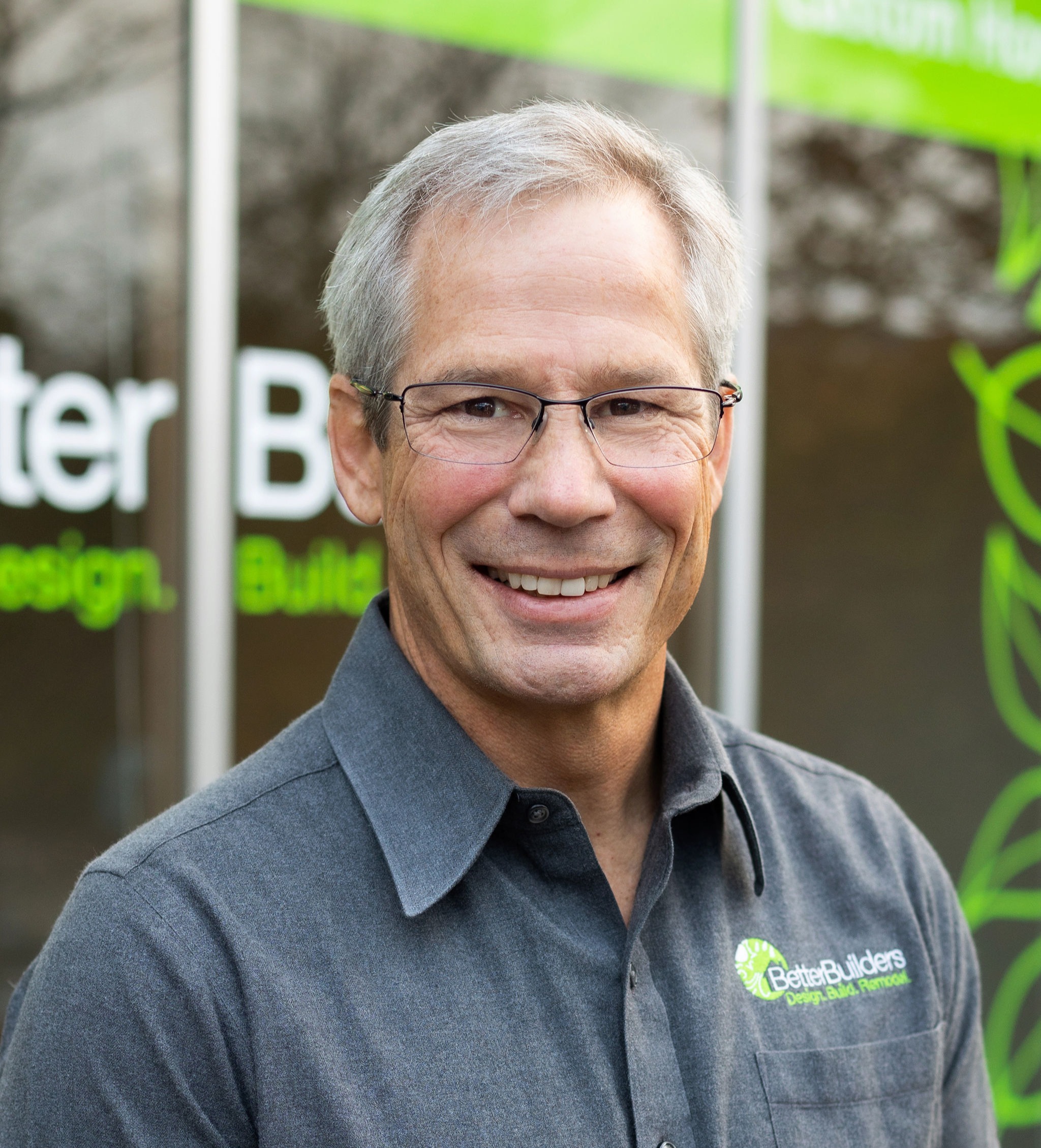
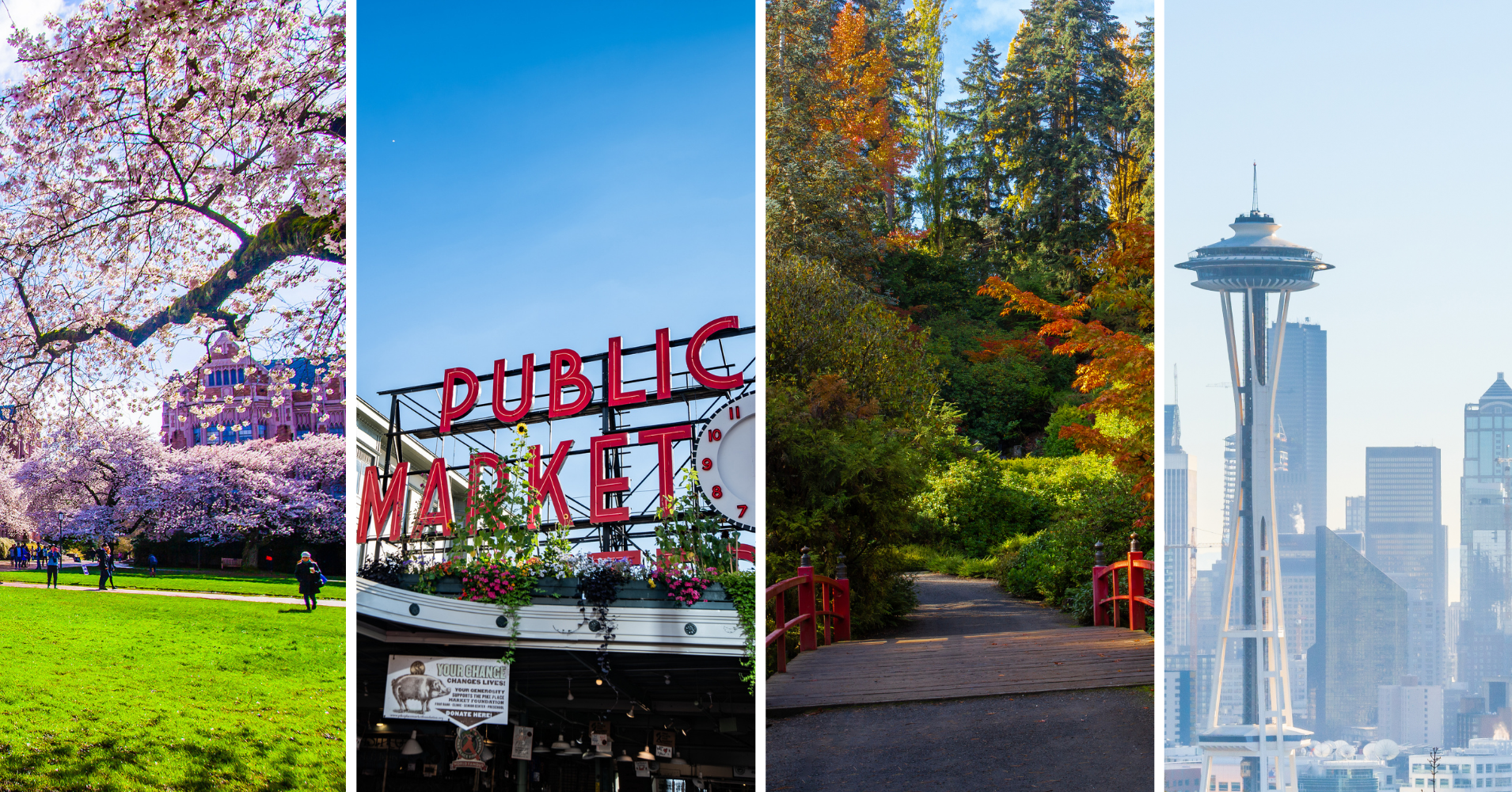
.png)
